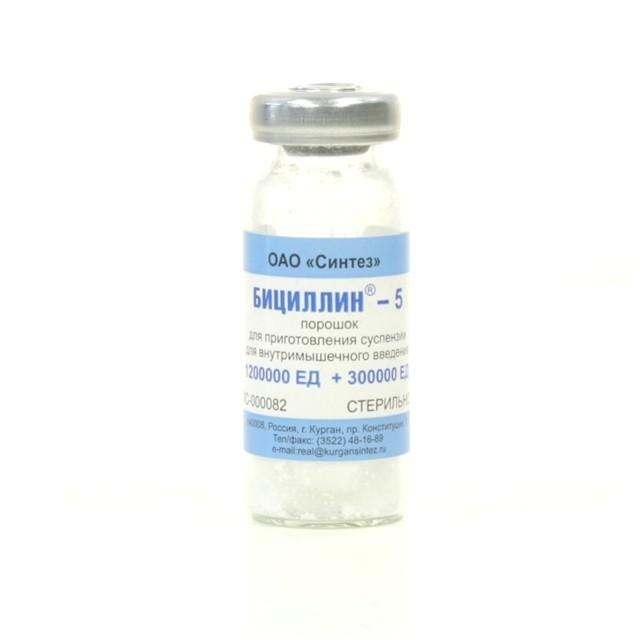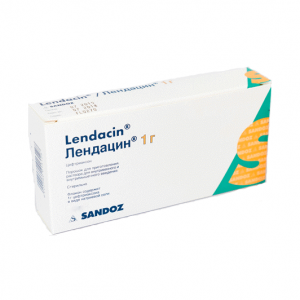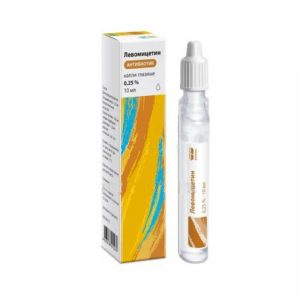Description
Release form
Powder for the preparation of a suspension for intramuscular administration.
Packaging
1 bottle.
Pharmacological action
Pharmacodynamics
Combined bactericidal antibiotic consisting of two long-acting benzylpenicillin salts. Suppresses the synthesis of the cell wall of a microorganism. Active against gram-positive microorganisms: Staphylococcus spp. (non-forming penicillinase), Streptococcus spp. (including Streptococcus pneumoniae), Corynebacterium diphtheriae, anaerobic spore-forming bacilli, Bacillus anthracis, Clostridium spp., Actinomyces israelii gram-negative microorganisms: Neisseria gonorrhoeae, Neisseria meningitidis, Treponema.
Staphylococcus spp. strains producing penicillinase are resistant to the action of the drug.
Pharmacokinetics
Bicillin ®-5 is a drug of prolonged action, a high concentration of the antibiotic in the blood lasts up to 4 weeks.
Benzoin benzylpenicillin.
After an intramuscular injection of benzathine, benzylpenicillin hydrolyzes very slowly, releasing benzylpenicillin. The maximum concentration of the drug in serum is achieved 12-24 hours after injection.
The long half-life provides a stable and long-term concentration of the drug in the blood: on day 14 after administration of 2,400,000 ME of the drug, the concentration in the serum is 0.12 μg / ml on the 21st day after administration of 1,200,000 ME of the drug – 0.06 μg / ml (1 ME = 0.6 μg). Diffusion of the drug in the liquid is complete, diffusion in the tissue is very weak. Communication with plasma proteins 40-60%. Benzatin Benzylpenicillin passes in small amounts through the placental barrier, and also passes into the mother s breast milk. Biotransformation of the drug is negligible. It is excreted mainly by the kidneys unchanged. For 8 days, up to 33% of the administered dose is released.
Benzylpenicillin.
The maximum concentration in blood plasma with intramuscular injection is achieved after 20-30 minutes. The half-life of the drug is 3060 minutes, with renal failure 4-10 hours or more. Communication with plasma proteins -60%. Penetrates into organs, tissues and biological fluids, except cerebrospinal fluid, tissues of the eye and prostate gland. With inflammation of the meningeal membranes, it penetrates the blood-brain barrier. Passes through the placenta and passes into breast milk. It is excreted by the kidneys unchanged.
Indications
Infections (in adults) caused by susceptible microorganisms: syphilis and other diseases caused by pale treponemas (frambesia), streptococcal infections (excluding infections caused by group B streptococci) – acute tonsillitis, scarlet fever, wound infections, erysipelatous inflammation rheumatism (prevention).
Contraindications
Hypersensitivity to drugs of the penicillin group and other beta-lactam antibiotics, to procaine.
Precautions: pregnancy, lactation, renal failure, allergic diseases, including bronchial asthma, hay fever (including history), pseudomembranous colitis.
Special instructions
Do not enter subcutaneously, intravenously, endolumbally, or in the body cavity. In case of accidental intravascular administration, a transient feeling of depression, anxiety, and visual impairment (Wannier syndrome) may occur. In order to avoid accidental intravascular administration of the drug, it is recommended to aspirate before intramuscular injection in order to identify possible needle entry into the vessel.
In the treatment of syphilis, microscopic and serological studies are necessary before starting therapy and then for 4 months. In connection with the development of fungal infections, it is advisable to prescribe B vitamins and Vitamin C at the same time, and, if necessary, antifungal drugs for systemic use. It must be borne in mind that the use of insufficient doses or too early cessation of treatment often leads to the appearance of resistant strains of pathogens.
Composition of
Benzathine benzylpenicillin – 1200000 units, benzylpenicillin novocaine salt (procaine benzylpenicillin) – 300000 units.
Dosage and Administration
Intramuscularly.
Adults – 1200000 units + 300000 units 1 time in 4 weeks.
For children of preschool age – 480000 PIECES + 120,000 PIECES 1 time in 3 weeks, for children over 8 years old – 960000 PIECES + 240000 PIECES 1 time in 4 weeks.
To prepare the suspension, use sterile water for injection, isotonic sodium chloride solution or 0.25-0.5% solution of procaine (novocaine).
A suspension of Bicillin ®-5 is prepared aseptically, immediately before use (ex tempore): 5-6 ml of solvent is slowly injected into the vial with the drug under pressure (at a speed of 5 ml in 20-25 sec). The contents of the vial are mixed and shaken along the longitudinal axis of the vial until a homogeneous suspension is formed. The presence of bubbles on the surface of the suspension at the walls of the vial is allowed. Suspension Bicillin ®-5 immediately after preparation is injected deeply intramuscularly into the upper outer quadrant of the gluteal muscle.
Rubbing the gluteal muscle after injection is not recommended. When administration is delayed immediately after preparation, the physical and colloidal properties of the suspension change, as a result of which its movement through the syringe needle may be difficult.
Side effects
Allergic reactions: anaphylactic shock, anaphylactoid reactions, urticaria, fever, arthralgia, angioedema, erythema multiforme, exfoliative dermatitis.
Laboratory parameters: anemia, thrombocytopenia, leukopenia, hypocoagulation.
Other: stomatitis, glossitis.
Drug interaction
Bactericidal antibiotics (including cephalosporins, vancomycin, rifampicin, aminoglycosides) have a synergistic bacteriostatic effect (including macrolides, chloramphenicol, lincosamides, tetracyclines) – antagonistic. Increases the effectiveness of indirect anticoagulants (suppressing the intestinal microflora, reduces the prothrombin index) reduces the effectiveness of oral contraceptives, drugs, in the process of metabolism of which para-aminobenzoic acid is formed, ethinyl estradiol is the risk of breakthrough bleeding. Diuretics, allopurinol, tubular secretion blockers, phenylbutazone, non-steroidal anti-inflammatory drugs, reducing tubular secretion, increase the concentration of benzylpenicillin in the blood and tissues. Allopurinol increases the risk of allergic reactions (skin rash).
Storage Conditions
In a dry place at a temperature not exceeding 20 ° C.
Expiration
3 years.
Active ingredient
Benzatine benzylpenicillin, procaine benzylpenicillin
Terms leave through pharmacies
In retseptu
lekarstvennaja form
Solution for
Prescribing
Nursing mothers as prescribed by a doctor, Pregnant as prescribed by a doctor, Adult as prescribed by a doctor
Pok azania
Indications
Skin infections, Vaginal infections, Tonsillitis, Infectious diseases
Synthesis AKOMP, Russia



